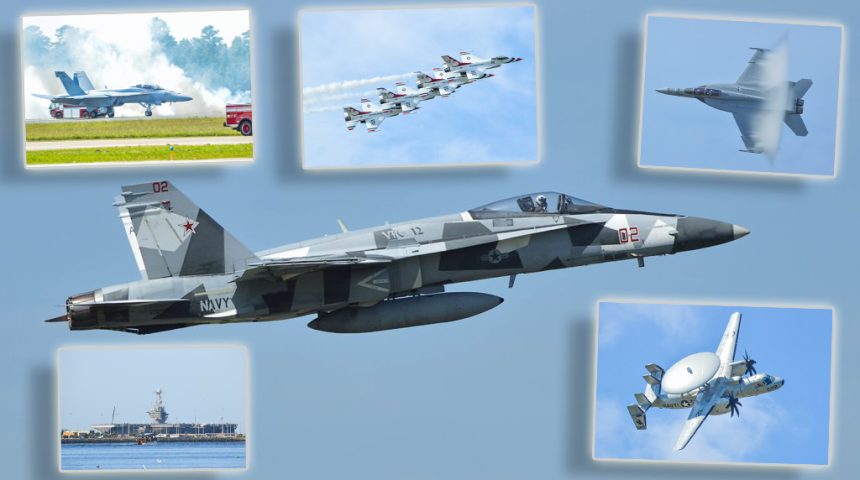Yes, you read that right: instead of the Navy Blue Angels, the Air Force Thunderbirds flew their show at the Navy’s premier East Coast Master Jet Base, NAS Oceana.
This year’s NAS Oceana Air Show took place on September 20-22. For the first time in years, the United States Air Force Thunderbirds performed their aerial demonstration at Naval Air Station Oceana, the U.S. Navy’s main East Coast air installation.
This occurred since the Blue Angels were performing that same weekend at Naval Air Station Lemoore in California. Designated as Master Jet Bases, NAS Oceana and NAS Lemoore support the Navy’s respective Atlantic and Pacific fleets. Located in the tidewater region of Virginia, NAS Oceana is the Master Jet Base which supports the carrier fleets operating from Naval Station Norfolk.
In official Navy speak, “The primary mission of Naval Air Station Oceana is as a Shore-Based Readiness Integrator, providing the facilities, equipment and personnel to support shore-based readiness, total force readiness and maintain operational access of Oceana-based forces.”
NAS Oceana hosts 16 F/A-18E/F Super Hornet squadrons, a fleet replacement squadron and an aggressor squadron. These units support the four carrier air wings that are assigned to the five Nimitz class carriers and the new Ford class carrier homeported at Naval Station Norfolk.
The Oceana-based Strike Fighter aircraft took part in an Air Power demo, demonstrating the maneuvers and tactics used to deliver air-to-ground weapons in real-world combat operations.
The F/A-18F, affectionately known as the “Rhino”, took the stage with the Super Hornet Tactical Demonstration, or “Tacdemo”, during which the VFA-106 Gladiators flew the two-seat Strike Fighter close to the “edge of the envelope.
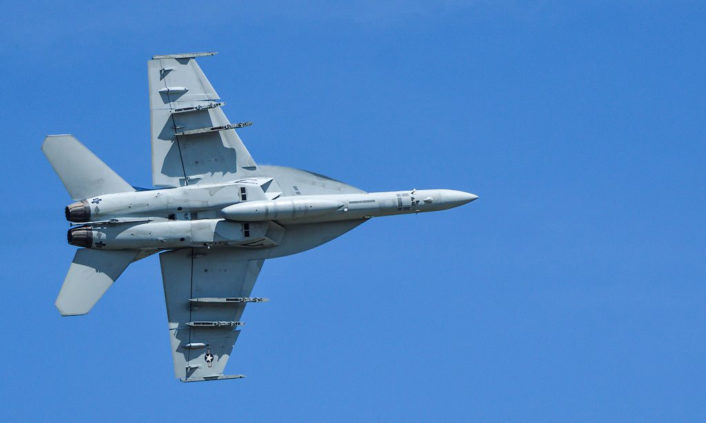
The Thunderbirds flew a unique show with five F-16s performing instead of the usual six F-16s. This was on account of opposing solo Major Michelle Curran, being temporarily off flight status due to an injury.
Still they conducted a fantastic aerial demonstration with various four or five ship formations and the single F-16 performing individual flybys.
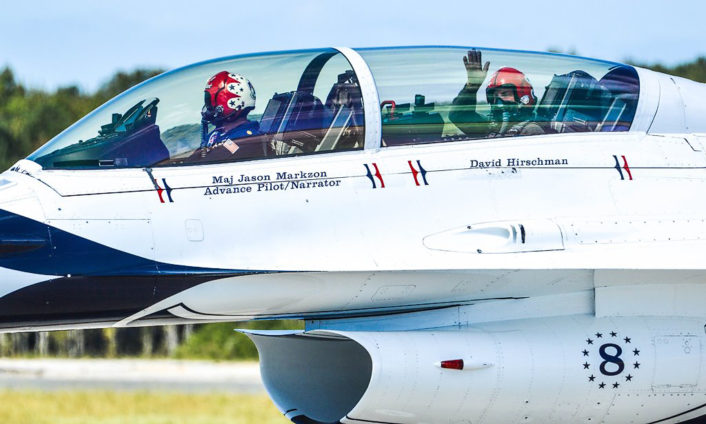
During the show’s practice day on Friday, a civilian Navy employee sustained a serious injury. The show was put on hold while he was airlifted to a hospital in Richmond, Virginia. Fortunately, he is expected to make a full recovery.
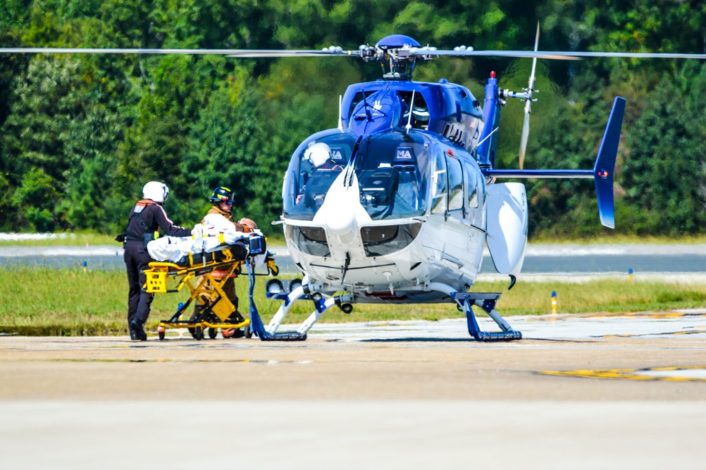
The Air Force provided a C-17 Globemaster III, which demonstrated surprising agility for such a large aircraft. The GEICO Skytypers Air Show Team flew their always entertaining show with six SNJ-2 World War 2 trainers. The SNJ-2 was the Navy designation for the North American Aviation built trainer, more commonly known as the T-6 Texan or Harvard.
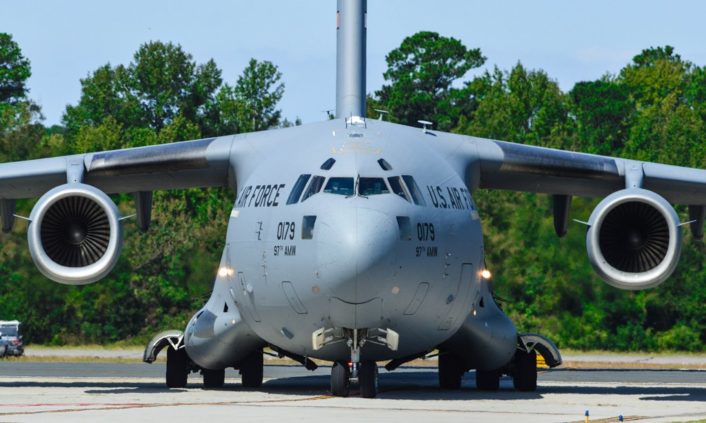
Flying in from neighboring Naval Station Norfolk Chambers Field was an E-2D Hawkeye from the “Greyhawks” of Carrier Airborne Squadron VAW-120.
The “Flying Omars” of Fighter Squadron Composite VFC-12, provided a couple of F/A-18A+s aggressor aircraft for the show. This most visually striking aggressor was painted in the arctic splinter camouflage, which mimics the camouflage pattern used by some Russian Air Force fighters.
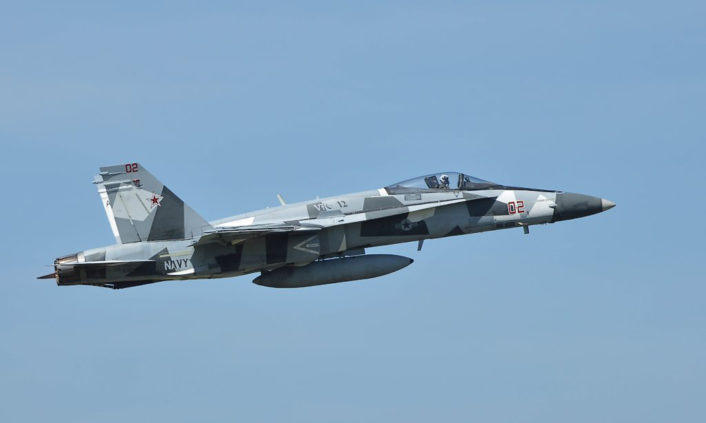
This particular air show and its location at NAS Oceana provide a great opportunity for a view of United States Naval aviation. The only down side of the show was, when the show’s pyrotechnics started a grass fire. The resulting smoke was not conducive to creating the sharpest of photographs. Still the NAS Oceana Air Show is not to be missed.
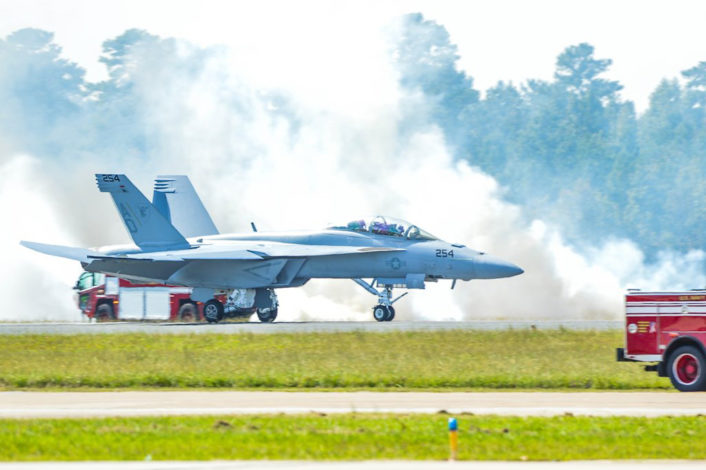
Here you can find a playlist with some interesting videos filmed during NAS Oceana Air Show (thanks to Kevin Gibson for sending this link over to us!).

